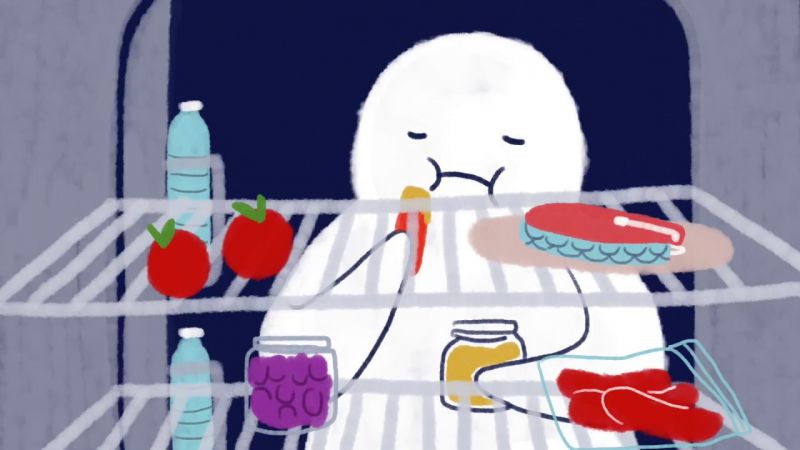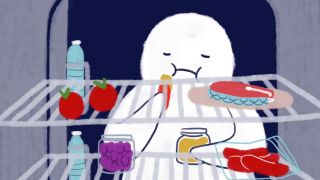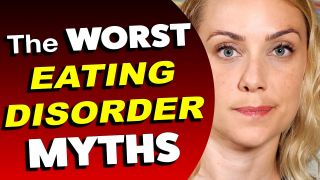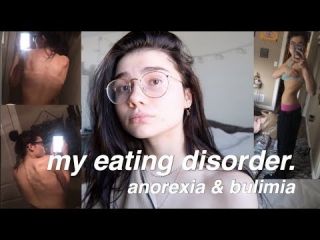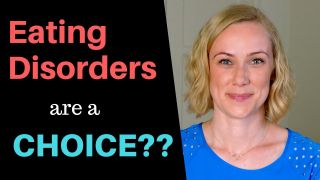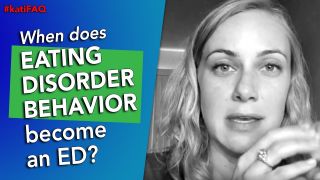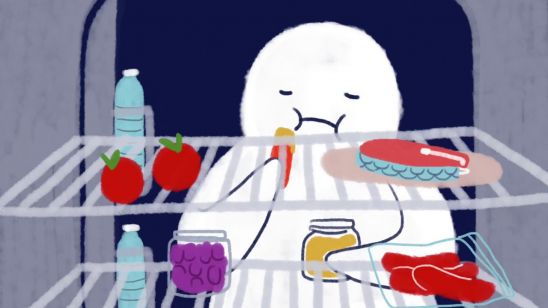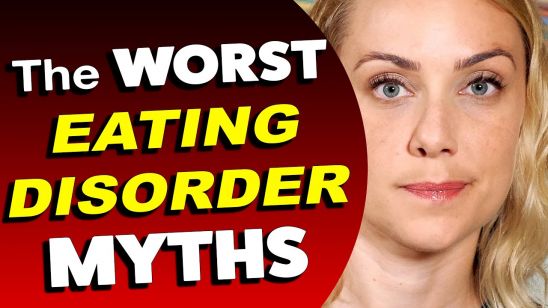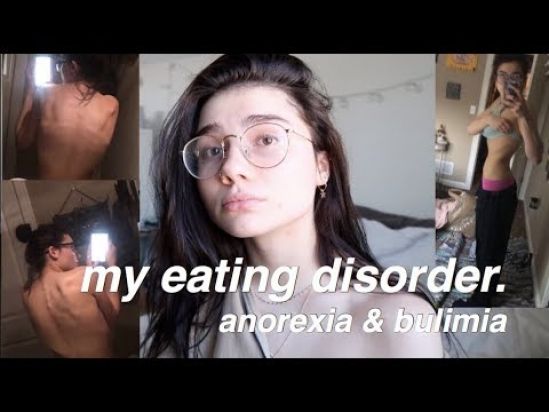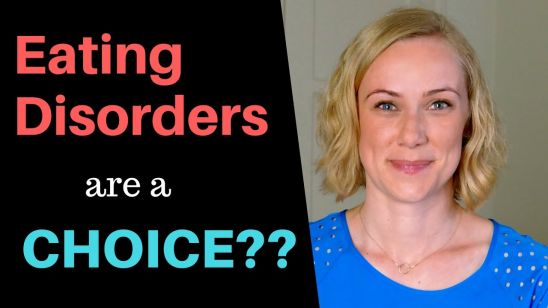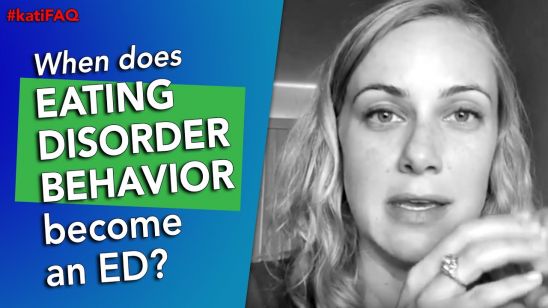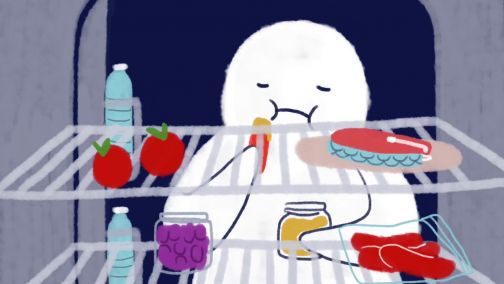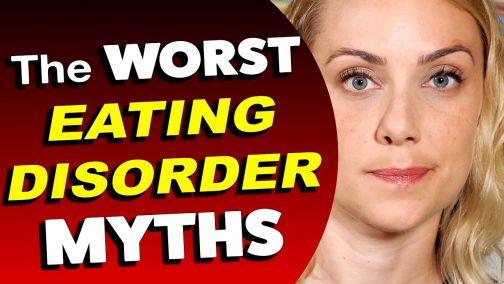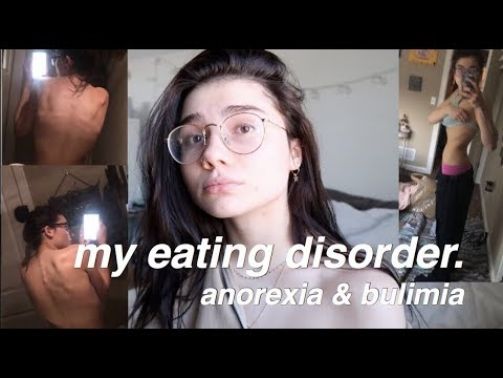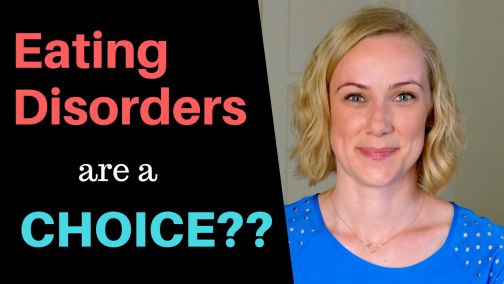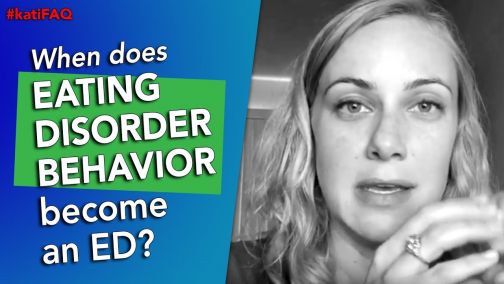Eating Disorders
Also known as EDs
What is it?
It’s common for people to adopt certain diets in order to eat healthier, manage gastrointestinal problems, follow cultural or religious traditions, or engage in more ethical consumption patterns. These behaviors don’t need to be alarming. In fact, many very healthy people regulate how and when they eat.
That said, obsessions with food, weight and body image are not healthy and can easily spiral into dangerous territory. When this happens, they’re called eating disorders or EDs.
Eating disorders are a range of psychological conditions that cause unhealthy eating habits to develop. They might start with an obsession with food, body weight, or body shape. In severe cases, EDs can cause longterm health consequences or even result in death.
Eating disorders can look very different depending on the type a person is suffering from. That said, most include food restriction, binging or purging behaviors. They also tend to be “hidden” illnesses, which can make them hard to spot, diagnose and treat.
Although EDs can affect people of any gender at any life stage, they're most often reported in adolescents and young women, especially those from Westernized countries. In fact, up to 13% of youth may experience at least one eating disorder by the age of 20.
What are the symptoms?
Generally speaking, an ED is an unhealthy relationship with food that results in disturbed eating habits. These unhealthy relationships and habits can seep into many different aspects of a person’s life, and not only present a threat to their emotional health, but their physical health as well.
Specific symptoms vary depending on the type of ED. Different types include:
- Anorexia nervosa: An ED in which a person constantly sees themself as being overweight, no matter how thin or fit they are. People with anorexia often weigh themselves obsessively and severely restrict food. They may also exercise obsessively, use laxatives or make themselves throw up after eating. These habits are also known as self-starvation and can have very serious impacts on a person’s health, including weakness, brittle hair and nails, anemia, heart damage, brain damage, constipation and low blood pressure, amongst others. Anorexia has the highest mortality rate of any mental disorder.
- Bulimia nervosa: An ED in which a person cycles between binging on large amounts of food, and then purging (aka self-induced vomiting) in the hopes of “undoing” what was just eaten. They may also exercise obsessively, use laxatives and fast in addition to the binge and purge cycle. Repetitive vomiting can cause serious health problems including swollen salivary glands, acid reflux disorder, dehydration, damaged tooth enamel and intestinal problems.
- Binge eating disorder: An ED in which a person eats excessive amounts of food in a short period of time. Doing so is not countered by purging, exercise, fasting or the use of laxatives. Because of this, many people with binge eating disorder are overweight.
- Orthorexia: An ED in which a person becomes obsessed with eating “healthy” foods and will restrict anything that does not fall into their definition of “healthy.” People with orthorexia may mirror many anorexia symptoms, such as restricting food, exercising obsessively or using laxatives after having something that was “bad for them.”
- Other specified feeding or eating disorder (OSFED): An ED in which people display multiple disordered eating habits. These frequently involve a combination of anorexia, bulimia and binge eating characteristics.
- Avoidant Restrictive Food Intake Disorder (ARFID): An ED in which a person avoids eating because they are uninterested in doing so, or dislike the taste, smell or texture of certain foods. Their preferences go beyond what would be considered normal “picky eating.” People with ARFID might be very thin or malnourished because of their eating patterns. However, these habits are not driven by a desire to be thin like they are with other conditions.
- Pica: An ED in which a person eats and craves items that are not considered “edible.” Common cravings include dirt, hair, paper and chalk. Eating these substances can make a person with Pica at risk for infection or poisoning.
- Rumination disorder: An ED in which a person regularly regurgitates their food. The regurgitation is not the byproduct of self-induced vomiting, sickness or some form of intolerance. After the food is regurgitated, the person may re-chew ir, re-swallow it or spit it out.
- Unspecified feeding / eating disorder (UFED): An ED in which a person’s disordered habits do not fit into any clear categories, despite them being noticeably impacted by them.
- Laxative abuse: An ED in which a person engages in regular or excessive use of laxatives to “rid” their body of waste quickly with the goal of losing weight. People that abuse laxatives often want to “feel thin” or as if there is no food in their system. This ongoing abuse can lead to issues with their stomach, intestines and colon.
- Compulsive exercise: An ED in which a person exercises obsessively in order to lose weight and “be healthy.” They may exercise for hours each day.
It’s important to remember that many people with EDs do not appear emaciated or extremely thin. While they are more common in young women, men can and do experience them as well.
EDs often lead to severe physical issues, especially if left untreated for long periods of time. Most result in dehydration, irreversible cardiac issues, amenorrhea and menstrual irregularities, low bone density, osteoporosis, cognitive deficits, and mood issues.
Calorie restriction, as seen in Anorexia Nervosa, often leads to low body temperature, constipation, dysrhythmias and electrocardiographic abnormalities. Vomiting behaviors, as often seen in Bulimia Nervosa, cause an esophageal or gastric rupture, gastroesophageal reflux, and dental erosions. Binge Eating can cause stomach pain, blood sugar fluctuations, blocked intestines from solid masses of undigested food, bacterial infections, and stomach rupture.
Additionally, eating disorders can lead to or be related to additional mental health problems. Many individuals with eating disorders experience a comorbid disorder. Common comorbid mental illnesses include depression, anxiety disorders, obsessive compulsive disorder and substance abuse disorders.
What are some common warning signs?
EDs are characterized by strange eating patterns, weight fluctuations and obsessions with body image. Because of this, a loved one with an ED might display noticeable changes in their appearance and behavior. Depending on the type, they might seem fatigued, malnourished or sickly. Many will act strange when asked to grab food or eat around others.
People with restrictive EDs like anorexia or orthorexia, might come up with excuses to not eat including “I’m not hungry” or “I ate recently.” They might make up food allergies. People with binge eating disorder may struggle to control their intake and seem hungry all the time. Someone with bulimia or bulimic tendencies may eat in front of others, but then spend long periods of time in the bathroom after doing so.
Appearance based warning signs include brittle hair and skin, worn down teeth, looking tired and fatigued, and gaining or losing noticeable amounts of weight in a short period of time. People may also have bad breath or gas from self-induced vomiting or laxative abuse.
If you think a loved one is struggling with an ED, pay close attention to the way they interact with food and the things they say about their body. Do they seem fixated on losing weight? Do they have a distorted view of themselves and what they look like? Do they mention exercising obsessively, using laxatives, purging or engaging in other strange eating habits? If so, they might have an ED and you should find time to talk to them about their symptoms.
What causes EDs?
There is no exact cause of an eating disorder. Doctors believe a range of factors play a role in their development, including:
- Having family members with EDs
- Being under extreme amounts of stress
- Struggling with other mental health conditions like anxiety and depression
- Living with adults who glorify thinness
- Having certain genes that predispose a person
- Chemical imbalances in the brain such as Serotonin irregularities
- Societal pressure, such as Western beauty standards or intense desires to be perceived as successful
- Comorbid mental illness. EDs often occur alongside OCD, OCPD, GAD, anxiety and depression
How is it treated?
Treatment plans are individualized based on a person’s unique needs and symptoms. This can include therapy, family interventions, medication and nutritional counseling. It is common for EDs to require “group approaches” meaning a combination of doctors, nutritionists and family members will be involved in treatment.
Common therapies include:
- Cognitive Behavioral Therapy (CBT): CBT is a therapeutic model that challenges negative thinking patterns and behaviors. It’s rooted in the idea that our attitudes greatly impact how we think and behave. In CBT, a therapist will help a person replace negative eating patterns with positive coping mechanisms and behaviors. A form of CBT called Dialectical Behavioral Therapy (DBT) has been shown to help people suffering with disordered eating.
- Family based therapy (FBT): FBT is a type of therapy in which family members are trained to recognize warning signs, monitor eating patterns, and help a person maintain a healthy weight. FBT is most commonly used with teenagers.
Inpatient and/or outpatient hospital programs may be recommended to help restore a natural weight, after which, additional therapies can be explored to further progress.
Some people will work one-on-one with dietitians and nutritionists to develop healthy meal plans and understand how certain foods and behaviors are impacting their body.
There are no medications approved specifically for treating EDs. However, a person may be prescribed antidepressants, anti-anxiety medications or mood stabilizers to address co-occurring disorders. You can learn more about those here.
In severe cases, hospitalization or in-patient care may be required. Learn more about treating EDs here.
How can I help a loved one with EDs?
It can be hard to know how to support a loved one with an ED. Do they want to talk about it, or will you push them away by starting the conversation? What interventions will help break the cycle of their condition?
There are no easy answers to these questions. Every person handles their mental health differently. That said, we all want to feel loved and supported. Showing someone that you’re invested in their wellbeing can make a world of difference. Here are some ways to do so:
- Educate yourself: Read up on ED symptoms, treatment options, and healthy living recommendations. Try and understand what your loved one is going through so you are prepared to support them.
- Avoid body-related commentary: Refrain from complimenting or criticizing them for weight loss or gain. People with EDs are often obsessed with body image, weight and size, and these statements can be very triggering. If they do a good job sticking to their recovery plan, give them praise for staying on track or “seeming happier and healthier” than before.
- Meal prep together: Cook meals together, eat together and find ways to infuse “fun” into the eating process. This may take some time to do successfully, but can be a good way to remind someone that eating can be a social and enjoyable task.
- Use empathy: Refrain from snapping at them when they are having a tough time, or saying things like “just eat” or “stop binging.” Remember that they are battling a complex and challenging condition. Remind them that you’re there for them and that you love them.
- Be patient: Don’t take it personally if they lash out at you or seem distant. These reactions have nothing to do with who you are as a person. Keep showing up for them even when it feels like it’s not helping.
And finally, remember to take care of yourself. Find counseling of your own if you are struggling to cope with their condition.
What other resources are out there?
Want to learn more, find a doctor, join a support group or speak to a counselor? The below resources might be able to help:
- National Eating Disorders Association (NEDA)
- NEDA helpline
- 18% Support Groups
- Crisis Text Line
- BetterHelp
- Psychology Today Directory
- American Psychiatric Association
- Medicaid Eligibility Information
- Open Path Collective
- Resources for POC, LGBTQ+ and disabled individuals
- Anxiety and Depression Association of America
- National Network of Depression Centers
- Medicine Assistance Tool
- NeedyMeds
- Erika's Lighthouse
- Anxiety Network
- Anxiety Central Forums
- Social Anxiety Association
- National Social Anxiety Disorder Center
- Social Anxiety Institute
Support our work
We’re on a mission to change how the world perceives mental health.
